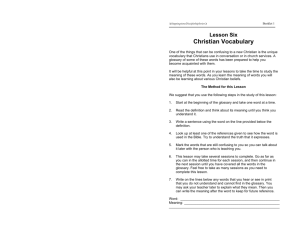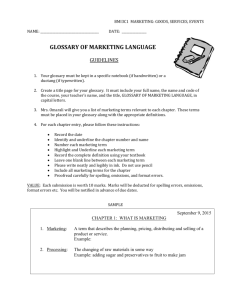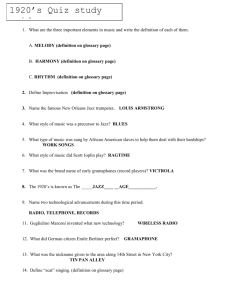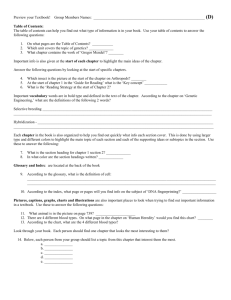Introduction of the Glossary - EN - 25.06
advertisement
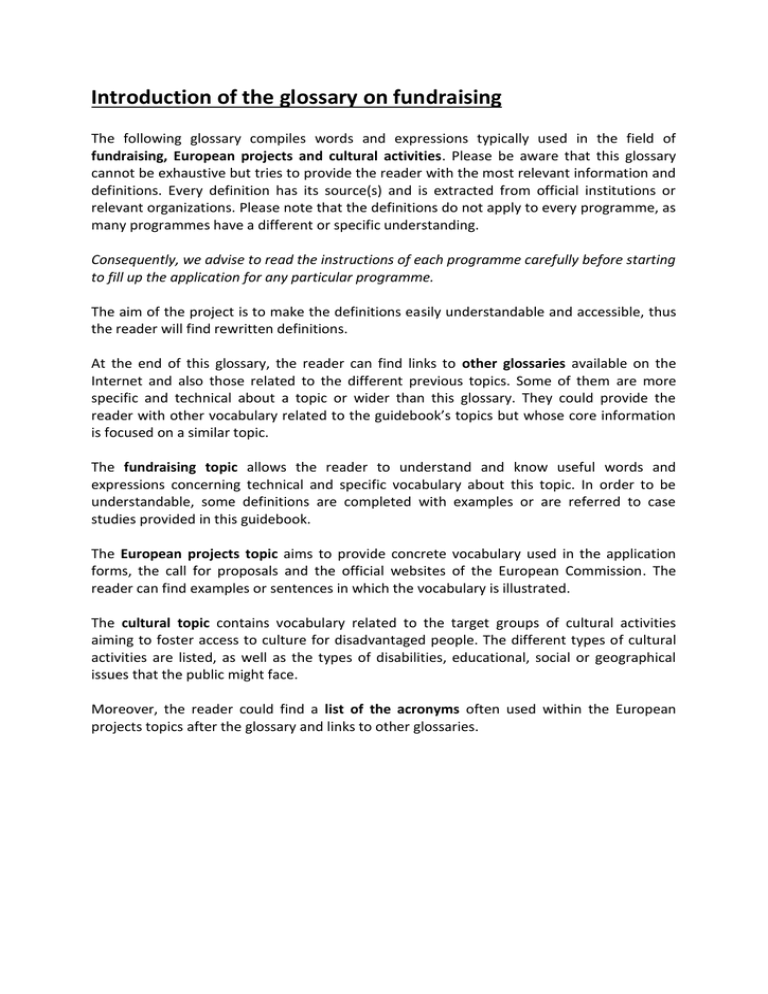
Introduction of the glossary on fundraising The following glossary compiles words and expressions typically used in the field of fundraising, European projects and cultural activities. Please be aware that this glossary cannot be exhaustive but tries to provide the reader with the most relevant information and definitions. Every definition has its source(s) and is extracted from official institutions or relevant organizations. Please note that the definitions do not apply to every programme, as many programmes have a different or specific understanding. Consequently, we advise to read the instructions of each programme carefully before starting to fill up the application for any particular programme. The aim of the project is to make the definitions easily understandable and accessible, thus the reader will find rewritten definitions. At the end of this glossary, the reader can find links to other glossaries available on the Internet and also those related to the different previous topics. Some of them are more specific and technical about a topic or wider than this glossary. They could provide the reader with other vocabulary related to the guidebook’s topics but whose core information is focused on a similar topic. The fundraising topic allows the reader to understand and know useful words and expressions concerning technical and specific vocabulary about this topic. In order to be understandable, some definitions are completed with examples or are referred to case studies provided in this guidebook. The European projects topic aims to provide concrete vocabulary used in the application forms, the call for proposals and the official websites of the European Commission. The reader can find examples or sentences in which the vocabulary is illustrated. The cultural topic contains vocabulary related to the target groups of cultural activities aiming to foster access to culture for disadvantaged people. The different types of cultural activities are listed, as well as the types of disabilities, educational, social or geographical issues that the public might face. Moreover, the reader could find a list of the acronyms often used within the European projects topics after the glossary and links to other glossaries. Links to other glossaries: - Erasmus+ guide for applicants, p304 Annex III Glossary of key terms: http://ec.europa.eu/programmes/erasmus-plus/documents/erasmus-plusprogramme-guide_en.pdf - Social Situation Monitor Glossary: http://ec.europa.eu/social/BlobServlet?docId=10375&langId=en - Social Europe Guide glossary p88: http://ec.europa.eu/social/BlobServlet?docId=12456&langId=en - Creative Europe Culture sub programme, Annex I p27: http://eacea.ec.europa.eu/sites/eacea-site/files/documents/guidelines-call-forproposals-cooperation-projects-2015_en_1.pdf - EU citizenship and free movement short glossary: http://ec.europa.eu/justice/citizen/glossary/index_en.htm - Asylum and migration glossary: http://ec.europa.eu/dgs/home-affairs/what-wedo/networks/european_migration_network/docs/emn-glossary-en-version.pdf
